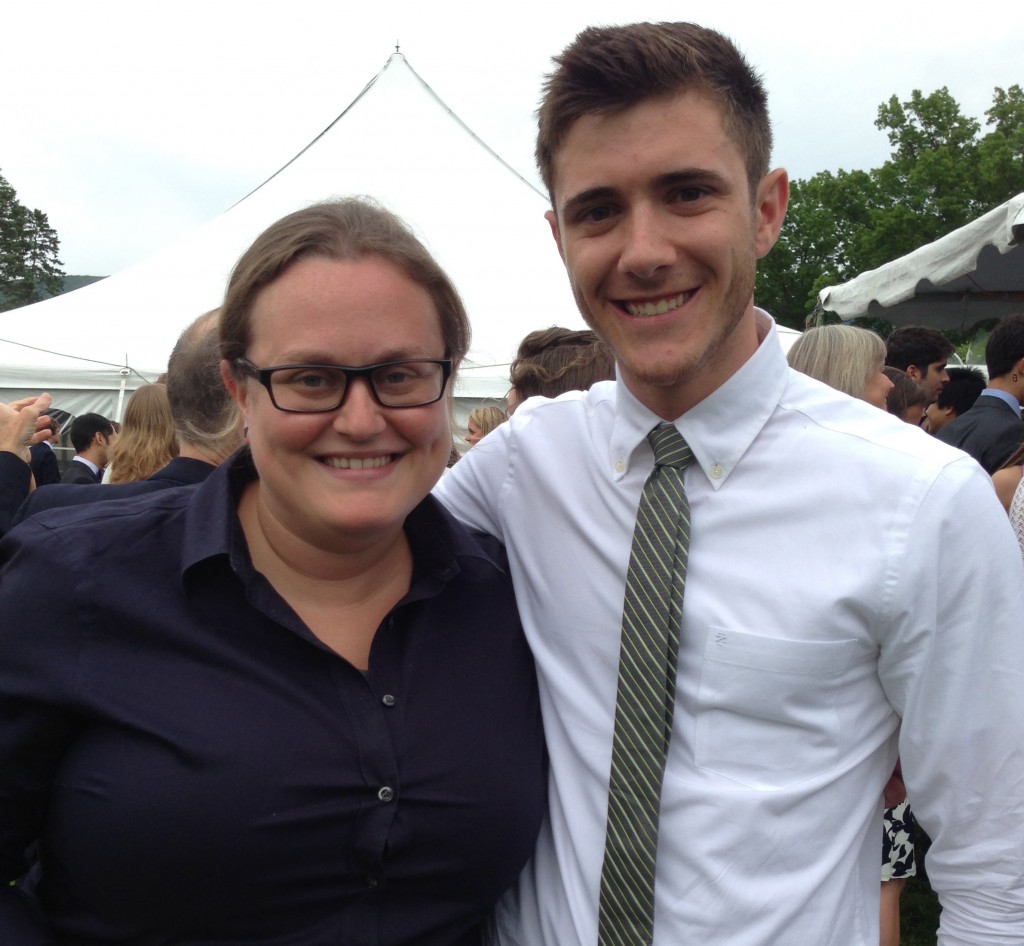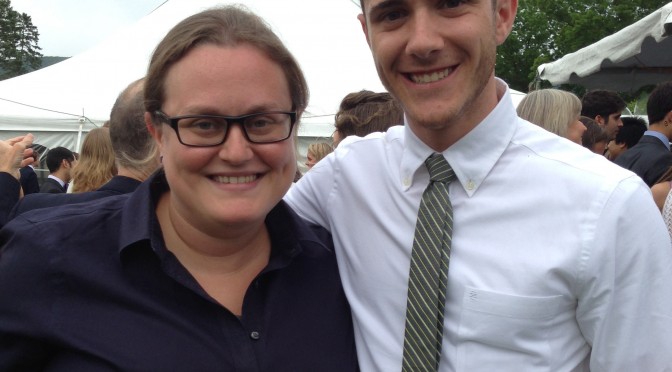By Marcus Hughes ’18
New to Williams last year, Professor Julie Blackwood works at the intersection of math and biology. Read on to learn about her background, her opinion about liberal arts, and her research on bats.
MH: What’s your background, and how did you end up at Williams?
JB: I’m originally from Buffalo, NY and went to college at RIT, Rochester Institute of Technology and got my degree in applied math with a focus in biology. When I was there, I did a couple of summer research programs. I wound up going to grad school at University of California, Davis, and earned my PhD in 2010 in applied math, studying how to maintain and conserve healthy coral reef habitats by minimizing fishing efforts. Once I graduated, I did a postdoc from 2010-2013 at the University of Michigan in ecology and evolutionary biology. I was doing disease research on rabies in bats. I started here at Williams in July of 2013.
MH: So what exactly led you to Williams?
JB: All I had been exposed to after my postdoc were large research universities. I knew about liberal arts schools but had never been directly exposed. As an undergrad, I went to a large school, but the math department was pretty small. There was a real sense of community. I missed that. When I went to Davis I taught a couple calculus courses. At Michigan, it was all research for three years. I really missed teaching and interacting with students. So, I started looking into small liberal arts schools because I knew there would be more opportunities for student interaction. When I came here for an interview, I fell in love with the place. I knew I would have been disappointed if I didn’t get the job. But I did! So that’s good!
MH: You’re teaching a calculus course, correct?
JB: I have two sections of about 30 students each. I teach Math 130, Calculus 1. It’s a fun class to teach because most students aren’t going to major in math. For many of them, this will be their only math class here. It can be a challenge to get them to appreciate it. I really appreciate that challenge — getting students excited about math.
MH: What are you teaching in the Spring?
JB: Mathematical modeling, a 400-level math senior seminar. It’ll be a course along the lines of my research but in many contexts in physics, chemistry, engineering, you name it. It’ll be a fun and exciting class to teach. The students here are so strong. It’s like working with graduate students.

MH: Why did you specialize in biology?
JB: I was a sophomore in college and had to choose a concentration. Math is cool, but I didn’t know what I wanted to do with it. So, I talked to one of my professors and said, “Look. I don’t know what I want to do with my life. I want to major in math, but I have no idea what I want to do with it.” She said, “Julie, what do you like?” And I was like, “Math,” and she said, “No, no no, what do you like outside of math? What are you passionate about?” I said, “When I was growing up I wanted to be a veterinarian.” So, I minored in biology. In graduate school, I looked into different aspects of biology and got into environmental research, thinking about hot topics like climate change, and started working in ecology.
MH: Do you teach any biology classes?
JB: Not exactly. Last Spring, I introduced a course called “Mathematical Modeling of Ecological Systems.” It was cross-listed as Biology and counted as a requirement for Environmental Studies. That was about 75% math majors and 25% biology majors. We talked about differential equations, the heart of the math of my research, and learned how to put them in the context of ecology. For example, one of the quintessential ecological problems is predator-prey dynamics, which can be mathematically explained. The class was a combination of learning biology, models, and how to program and simulate.
MH: How does that compare to your research?
JB: Some of what I do there’s a lot of data for it. When there’s data, you can develop models and then use statistical inference to fit the models to the data. It’s useful to make predictions and understand different parameters in the system. This was the method I used a lot with rabies in vampire bats. I could look at different culling strategies and how to manage the bat population. In other systems where there’s not as much data available, it’s much more theoretical. It’s more about developing models and doing some analysis. Then, I can look at what happens if I have different parameters to understand the full scope of what the dynamics could look like. From there, we can consider what is actually happening.
MH: Are you still working on the rabies in vampire bats project?
JB: I’m actually not. I’m working on White Nose Syndrome in bats, which I began with a senior honors thesis student, David Stevens, last year. White Nose Syndrome started in Albany in 2006, infecting a lot of bats, primarily the Little Brown Bat. The bat grows a fungus on its muzzle and wings, forcing the bat to prematurely wake from hibernation. They use up all their fat reserves and starve to death. The fungus is spreading southward and westward in the US.
We wanted to develop a model of the seasonal dynamics to pinpoint the effects of different parameters. For example, what is the effect of a potential environmental reservoir? If an infected bat hibernates in a cave, it sheds some of its pathogen in the cave. Another bat can come later and get infected. What’s the effect on the overall population dynamics if I have an environmental reservoir versus two bats coming together? We did a lot of modeling with that.
MH: Once your thesis student graduated, where did he go?
JB: He was doing research in Hong Kong in the summer. Now, he was accepted into graduate school but deferred for a year. He’s looking for work this year, but next year he might be going to grad school at Davis, where I went. I’m a strong advocate for Davis.
MH: So overall has Williams been everything you expected?
JB: It has! I was afraid of it being small. I thought it would be isolating, maybe a little lonely. But it hasn’t been that at all because I think there’s such a sense of community here. You don’t feel alone. That part of it hasn’t been an issue for me. The students here are just awesome. That has been everything and more! My dream would be to continue teaching here.
To learn more about Blackwood’s involvement with White Nose Syndrome: http://www.berkshireeagle.com/news/ci_25056139/berkshire-bat-species-dwindling-due-white-nose-syndrom
To learn more about Blackwood’s involvement with rabies in vampire bats: http://www.sciencedaily.com/releases/2013/12/131202162156.htm
